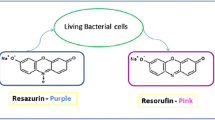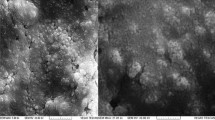Abstract
Burkholderia cepacia complex (BCC) presence has been the cause of recalls of both sterile and non-sterile pharmaceutical products since these opportunistic pathogens have been implicated to cause infections to susceptible individuals. BCC are ubiquitous in nature, but in pharmaceutical settings the most common source is contaminated water systems. Some strains of BCC, previously described as Pseudomonas cepacia, were not readily detected by standard culture methods. We have explored different strategies to recover and enrich Burkholderia cenocepacia previously cultured in distilled water for 40 days. Enrichment media of varied nutrient concentrations and composition were used, including modified Tryptic Soy Agar or Broth (TSA or TSB), Reasoner’s 2nd Agar or Broth (R2A or R2AB), Brain–Heart Infusion Broth (BHIB), Mueller–Hinton Broth (MHB), and Ashdown’s (ASH) medium. Of the various broth media tested, cell growth was significantly greater in TSB and R2AB than in BHIB, MHB, or ASH broth. TSB and R2AB were also compared for their recovery efficiency. Generally, there was no significant difference between the numbers of B. cenocepacia grown on 15 differently modified TSA and five modified R2A solid media. Overall, however, diluted TSA and TSB media, and R2A and R2AB showed better recovery efficiency than TSA and TSB for inocula containing small numbers of cells. All strains persisted in distilled water for 40 days. Broth media were more effective than solid media for recovery of B. cenocepacia from distilled water. These results may assist in improving detection assays with recovery and enrichment strategies to maximize recovery of these fastidious organisms.




Similar content being viewed by others
References
Blodgett R (2010) Bacteriological analytical manual Appendix 2: Most probable number from serial dilutions. http://www.fda.gov/Food/FoodScienceResearch/LaboratoryMethods/ucm109656.htm. Accessed 31 Feb 2014
Carson LA, Favero MS, Bond WW, Petersen NJ (1973) Morphological, biochemical, and growth characteristics of Pseudomonas cepacia from distilled water. Appl Microbiol 25:476–483
Carson LA, Tablan OC, Cusick LB, Jarvis WR, Favero MS, Bland LA (1988) Comparative-evaluation of selective media for isolation of Pseudomonas cepacia from cystic-fibrosis patients and environmental sources. J Clin Microbiol 26:2096–2100
Drevinek P, Mahenthiralingam E (2010) Burkholderia cenocepacia in cystic fibrosis: epidemiology and molecular mechanisms of virulence. Clin Microbiol Infect 16:821–830
Gibb AP (1999) Plates are better than broth for recovery of fastidious organisms from some specimen material. J Clin Microbiol 37:875
Gilbert SE, Rose LJ (2012) Survival and persistence of nonspore-forming biothreat agents in water. Lett Appl Microbiol 55:189–194
Glass MB, Beesley CA, Wilkins PP, Hoffmaster AR (2009) Comparison of four selective media for the isolation of Burkholderia mallei and Burkholderia pseudomallei. Am J Trop Med Hyg 80:1023–1028
Hagedorn C, Gould WD, Bardinelli TR, Gustavson DR (1987) A selective medium for enumeration and recovery of Pseudomonas cepacia biotypes from soil. Appl Environ Microbiol 53:2265–2268
Jannasch HW (1967) Growth of marine bacteria at limiting concentrations of organic carbon in seawater. Limnol Oceanogr 12:264–271
Jimenez L (2007) Microbial diversity in pharmaceutical product recalls and environments. PDA J Pharm Sci Technol 61:383–399
Kaper JB, Sayler GS, Baldini MM, Colwell RR (1977) Ambient temperature primary nonselective enrichment for isolation of Salmonella spp. from an estuarine environment. Appl Environ Microbiol 33:829–835
Limmathurotsakul D, Wuthiekanun V, Amornchai P, Wongsuwan G, Day NPJ, Peacock SJ (2012) Effectiveness of a simplified method for isolation of Burkholderia pseudomallei from soil. Appl Environ Microbiol 78:876–877
Mahenthiralingam E, Urban TA, Goldberg JB (2005) The multifarious, multireplicon Burkholderia cepacia complex. Nat Rev Microbiol 3:144–156
Meredith FT, Phillips HK, Reller LB (1997) Clinical utility of broth cultures of cerebrospinal fluid from patients at risk for shunt infections. J Clin Microbiol 35:3109–3111
Miller SCM, LiPuma JJ, Parke JL (2002) Culture-based and non-growth-dependent detection of the Burkholderia cepacia complex in soil environments. Appl Environ Microbiol 68:3750–3758
Moore RA, Tuanyok A, Woods DE (2008) Survival of Burkholderia pseudomallei in water. BMC Res Notes 1:11–16
Olapade OA, Gao X, Leff LG (2005) Abundance of three bacterial populations in selected streams. Microb Ecol 49:461–467
Pan HM, Feng JH, Cerniglia CE, Chen HZ (2011) Effects of Orange II and Sudan III azo dyes and their metabolites on Staphylococcus aureus. J Ind Microbiol Biotechnol 38:1729–1738
Pumpuang A, Chantratita N, Wikraiphat C, Saiprom N, Day NPJ, Peacock SJ, Wuthiekanun V (2011) Survival of Burkholderia pseudomallei in distilled water for 16 years. Trans R Soc Trop Med Hyg 105:598–600
Reasoner DJ, Geldreich EE (1985) A new medium for the enumeration and subculture of bacteria from potable water. Appl Environ Microbiol 49:1–7
Reik R, Spilker T, LiPuma JJ (2005) Distribution of Burkholderia cepacia complex species among isolates recovered from persons with or without cystic fibrosis. J Clin Microbiol 43:2926–2928
Robertson J, Levy A, Sagripanti JL, Inglis TJJ (2010) The survival of Burkholderia pseudomallei in liquid media. Am J Trop Med Hyg 82:88–94
Schaffter N, Parriaux A (2002) Pathogenic-bacterial water contamination in mountainous catchments. Water Res 36:131–139
Straka RP, Stokes JL (1957) Rapid destruction of bacteria in commonly used diluents and its elimination. Appl Microbiol 5:21–25
Torbeck L, Raccasi D, Guilfoyle DE, Friedman RL, Hussong D (2011) Burkholderia cepacia: this decision is overdue. PDA J Pharm Sci Technol 65:535–543
Vandamme P, Holmes B, Coenye T, Goris J, Mahenthiralingam E, Lipuma JJ, Govan JR (2003) Burkholderia cenocepacia sp. nov—a new twist to an old story. Res Microbiol 154:91–96
Vanlaere E, Coenye T, Samyn E, Van den Plas C, Govan J, de Baets F, de Boeck K, Knoop C, Vandamme P (2005) A novel strategy for the isolation and identification of environmental Burkholderia cepacia complex bacteria. FEMS Microbiol Lett 249:303–307
Vermis K, Brachkova M, Vandamme P, Nelis H (2003) Isolation of Burkholderia cepacia complex genomovars from waters. Syst Appl Microbiol 26:595–600
Vial L, Chapalain A, Groleau MC, Deziel E (2011) The various lifestyles of the Burkholderia cepacia complex species: a tribute to adaptation. Environ Microbiol 13:1–12
Washington JA (1989) Blood cultures—an overview. Eur J Clin Microbiol Infect Dis 8:803–806
Wuthiekanun V, Smith MD, White NJ (1995) Survival of Burkholderia pseudomallei in the absence of nutrients. Trans R Soc Trop Med Hyg 89:491
Young CS, Burns RG (1993) Detection, survival, and activity of bacteria added to soil. In: Bollag J-M, Stotzky G (eds) Soil biochemistry, vol 8., Marcel Dekker, Inc., New York, USA, pp 1–41
Zanetti F, De Luca G, Stampi S (2000) Recovery of Burkholderia pseudomallei and B. cepacia from drinking water. Int J Food Microbiol 59:67–72
Acknowledgments
We thank Drs. John Sutherland and Sangeeta Khare for reviewing the manuscript. This work was supported in part by an interagency agreement between the US Department of Energy and the US Food and Drug Administration to the summer student research program at the National Center for Toxicological Research administered by the Oak Ridge Institute for Science and Education. The views presented in this article do not necessarily reflect those of the Food and Drug Administration.
Author information
Authors and Affiliations
Corresponding author
Rights and permissions
About this article
Cite this article
Ahn, Y., Kim, J.M., Ahn, H. et al. Evaluation of liquid and solid culture media for the recovery and enrichment of Burkholderia cenocepacia from distilled water. J Ind Microbiol Biotechnol 41, 1109–1118 (2014). https://doi.org/10.1007/s10295-014-1442-3
Received:
Accepted:
Published:
Issue Date:
DOI: https://doi.org/10.1007/s10295-014-1442-3




